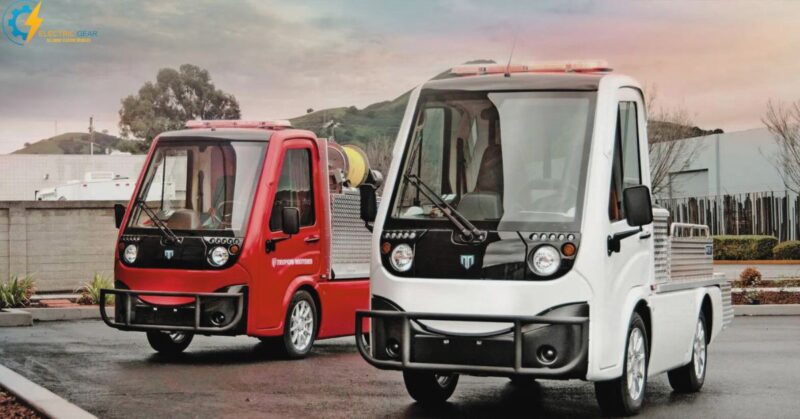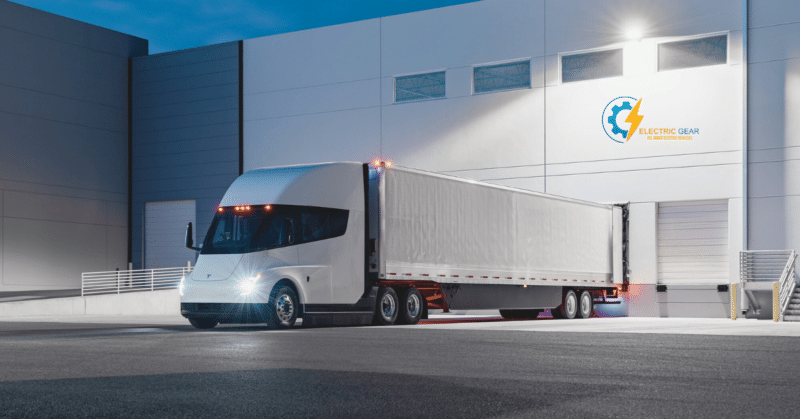In the constantly changing world of car technology, electric cars have become a promising option for vehicles that run on gasoline. One of the most important things for people who want to buy an electric car is how far they can go on a single charge.
This piece details the things that affect the range of electric vehicles and gives valuable tips for making that range better and longer. Whether you already have an electric car or are considering making the switch, this article has everything you need to know.
How Many Miles Can an Electric Car Go?
Over time, the cost of “going electric” declines, charging stations are becoming more widespread worldwide, and many are considering buying electric cars. By the end of 2030, over 190 million EVs will be on the road.

Before investigating EVs, it is essential to know the most potential concerns of electric car drivers How many miles can an electric car travel? Over 40 percent of EV drivers have dire concerns about being left halfway due to the non-availability of widespread charging stations.
Modern EVs’ mileage is far better than their predecessors. However, people are still curious about how many miles an electric car can go. Electric vehicle mileage ranges vary based on multiple factors, which we will explain later in this article.
Maximum Miles on a Full Charge

A report published by PHEV describes the average figure for how far one charge can get you as 250 miles. However, newer models from Marquee companies like Mercedes and Tesla can go 600 miles on one account.
Leading Factors Affecting EV Range
The mileage range of electric vehicles varies from model to various other factors, and there is no specific answer to the question of how many miles an electric car can go. There may be multiple causes for such a variance in the EV range from each other.

Some of the leading factors in this concern may include the size of an electric car’s battery and how new the vehicle is. Driving behavior and weather conditions also play a crucial role in determining an EV’s performance and range.
Some of the leading factors affecting the range of electric vehicles are listed below:
Extreme weather conditions
Weather critically affects the EV battery’s health in more ways than one because its efficiency reduces in cold weather; hence, all-electric vehicles come with a water cooling system for their batteries and some other parts.
Heating system
Turning on the electric car’s heating system also uses power since the electric motor doesn’t generate heat like a gasoline engine.
Size of the battery
The larger the battery pack of an electric vehicle, the more lithium-ion cells are likely to store electricity to provide energy to the electric motor. The more energy stored, the higher the range of the vehicle.
Driving speed
People worry about how many miles an electric car can travel; however, they do not think about their driving habits, as the faster you drive or, the more aggressively you accelerate the vehicle, the quicker the battery of the EV drains. It results in less mileage.
Electrically powered features
Turning on electric car features like headlights, radio, and additional lights, which consume direct battery’s electric power, can reduce the performance, efficiency, and range a car can travel on a single charge.
Time
One primary factor directly impacting EV life span and range is how old the vehicle’s battery is. All EV batteries lose capacity and reduce efficiency over time.
Frequency of charging
Another significant factor in the degradation of EV battery life and resulting lesser mileage is the frequency of charging the vehicle’s battery. Unusual charging accelerates the degradation of the cells of lithium-ion batteries.
Wind
Wind, especially the headwind, is another factor that impacts EVs’ range. The vehicle encounters more resistance, the more vigorous the headwind is.
Payload
Like the wind, the electric motor has to work more to counteract the weight of a heavier payload. It is safe to predict that the efficiency of EVs will decrease as you add more passengers and goods to the vehicle.
Tire traction
Electric car range inefficiency may also result from poor tire traction. Factors contributing to tire traction are quality, inflation, and road condition. Tire traction will impact range less than speed. However, it still plays a role in range loss.
Cold weather
EV batteries need to operate at neutral temperatures. They are not fond of extreme weather conditions or icy weather. So, extreme cold or sometimes heat will result in loss of mileage of an EV.
During cold (below 50 degrees Fahrenheit), you will find a slight drop in range due to the heat needed to warm up the battery. Below 30 degrees, the range loss becomes more visible.
HVAC
Unlike conventional vehicles, heating, ventilating, and air conditioning are electric-powered features in an EV.
All these features consume battery power to function as against ICE, which provides engine heat and power to make these functions operate. All these electrical-powered features consume purely battery power hence, directly affecting the car’s mileage.
Top Most Ways to Boost Your EV Range
Here are how to get the maximum miles each time you get on the road:
Drive efficiently: How you drive significantly affects the range of your EV. Keep your speed constant and stay away from dramatic shifts. While slowing or stopping, regenerative braking may be used to replenish lost energy.
Use Eco mode: The Eco mode on most EVs slows the vehicle down, caps its top speed, and reduces the air conditioning and heating to save power.
Regenerative braking: This system can enhance the efficiency of your electric vehicle’s range. When you lift your foot from the accelerator of an EV, the electric motor starts performing as a generator and charges the battery. In this way, you will experience a positive range.
Minimize the use of HVAC: Reduce your EV’s driving range by turning on the air conditioner or heater. Set the temperature to something pleasant and utilize seat warmers instead of the cabin heater to reduce your reliance on it, for example, to save battery power.
Vehicle preconditioning: Precondition your vehicle while it is still charging when you travel in extremely cold or warm temperatures. Turn on the heater or A/C while it is still plugged in, and let the vehicle reach a comfortable temperature.
Routine Maintenance: Going for routine EV maintenance affects the mileage of your vehicle.
Keep your tires properly inflated: Tires with low air pressure increase rolling resistance, which decreases the EV’s range. Maintain the correct inflation pressure by checking your tire pressure often.
Slow down: You will boost your battery range if you keep your speed under 60 mph whenever possible: The Department of Energy says you will use 14 percent less energy by reducing your speed by 10 mph.
Remove unnecessary weight and Travel light: Reducing the weight of a vehicle is the easiest way to boost its efficiency. So, get the junk out of the trunks, as carrying 200 pounds of additional cargo can increase a vehicle’s energy consumption by 2-4 percent.
Keep it slick: Avoid fitting your EV with exterior attachments like cargo carriers and roof racks. The aerodynamic drag such objects produce at more incredible speed will increase battery consumption.
Plan a more efficient route: Plan the most effective route with the help of a GPS or other navigational equipment. Avoiding rush hour and severe inclines while using recharge stations along the route would be best.
Charge to 100% only when needed: Charging your electric vehicle’s battery to its maximum capacity might cause additional strain on the battery and shorten its useful life. When you require the entire range, as before a lengthy journey, that’s the only time you should charge 100%. If possible, maintain a battery charge of between 20 and 80 percent.
Do Electric Cars Lose Range Over Time?
Indeed, just like any other vehicle, electric automobiles’ range can degrade with time. Degradation of the battery is the primary cause of decreasing range. The battery’s capacity to store energy declines with use, which can limit your vehicle’s driving distance. Different batteries degrade at different rates depending on their age, how often they are used, how hot or cold it is, and how often they are charged and discharged.
An EV battery has a second life after an average of 150000 miles on the road. According to Graeme Cooper’s statement, the battery will outlive the car. Today, most EV batteries have a life expectancy of 15 to 20 years within the vehicle – and a second life beyond.
Most recent EVs, however, use sophisticated battery management systems that slow down the battery’s deterioration and keep it in good shape. Some electric vehicle manufacturers also provide range reduction guarantees on their batteries.

Imran is an experienced content writer who crafts engaging and informative articles for a variety of industries. With a keen eye for detail and a passion for storytelling, Imran delivers high-quality content that resonates with readers. Whether he’s writing blog posts, social media content, or website copy, Imran is committed to delivering compelling content that drives results.







